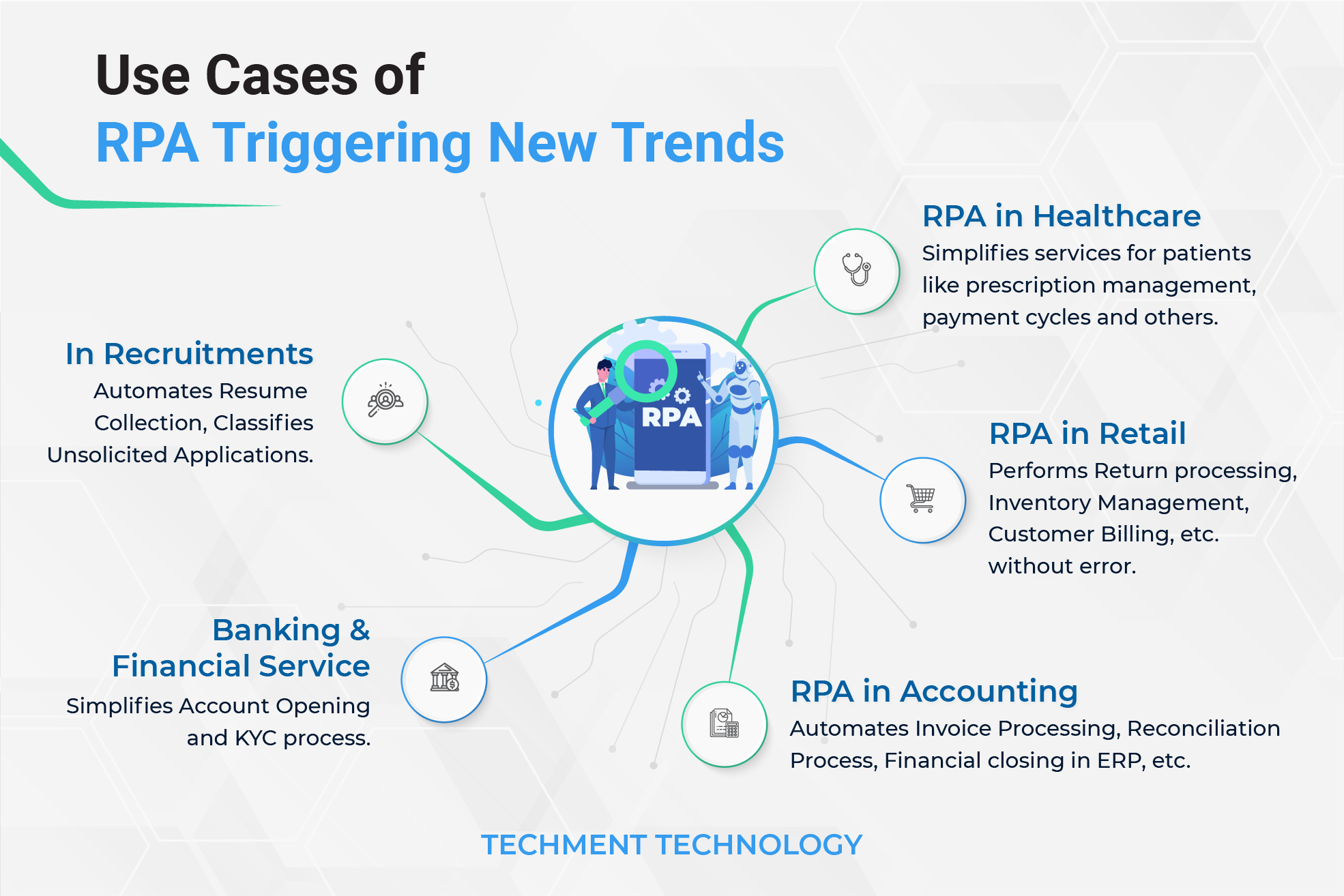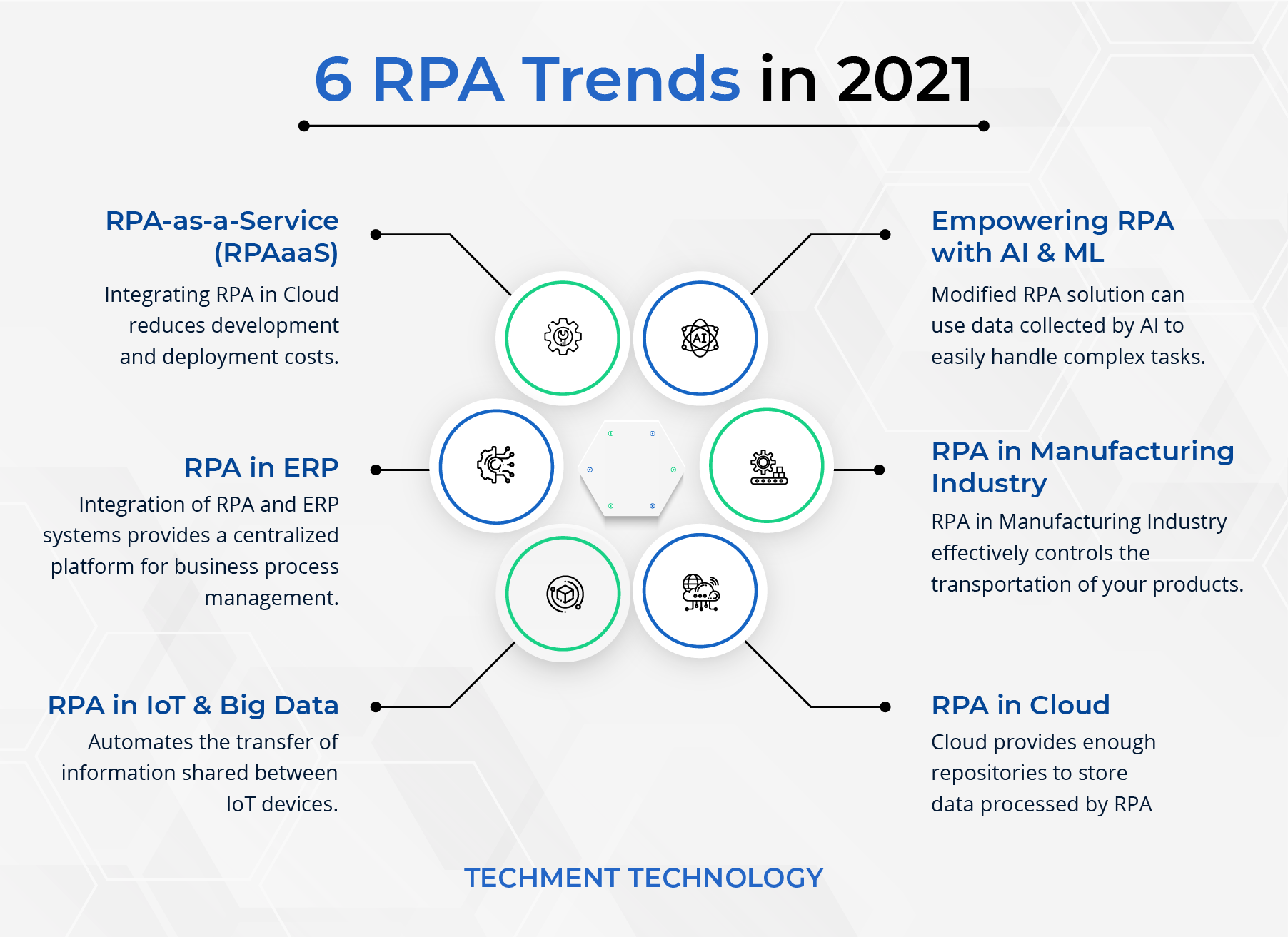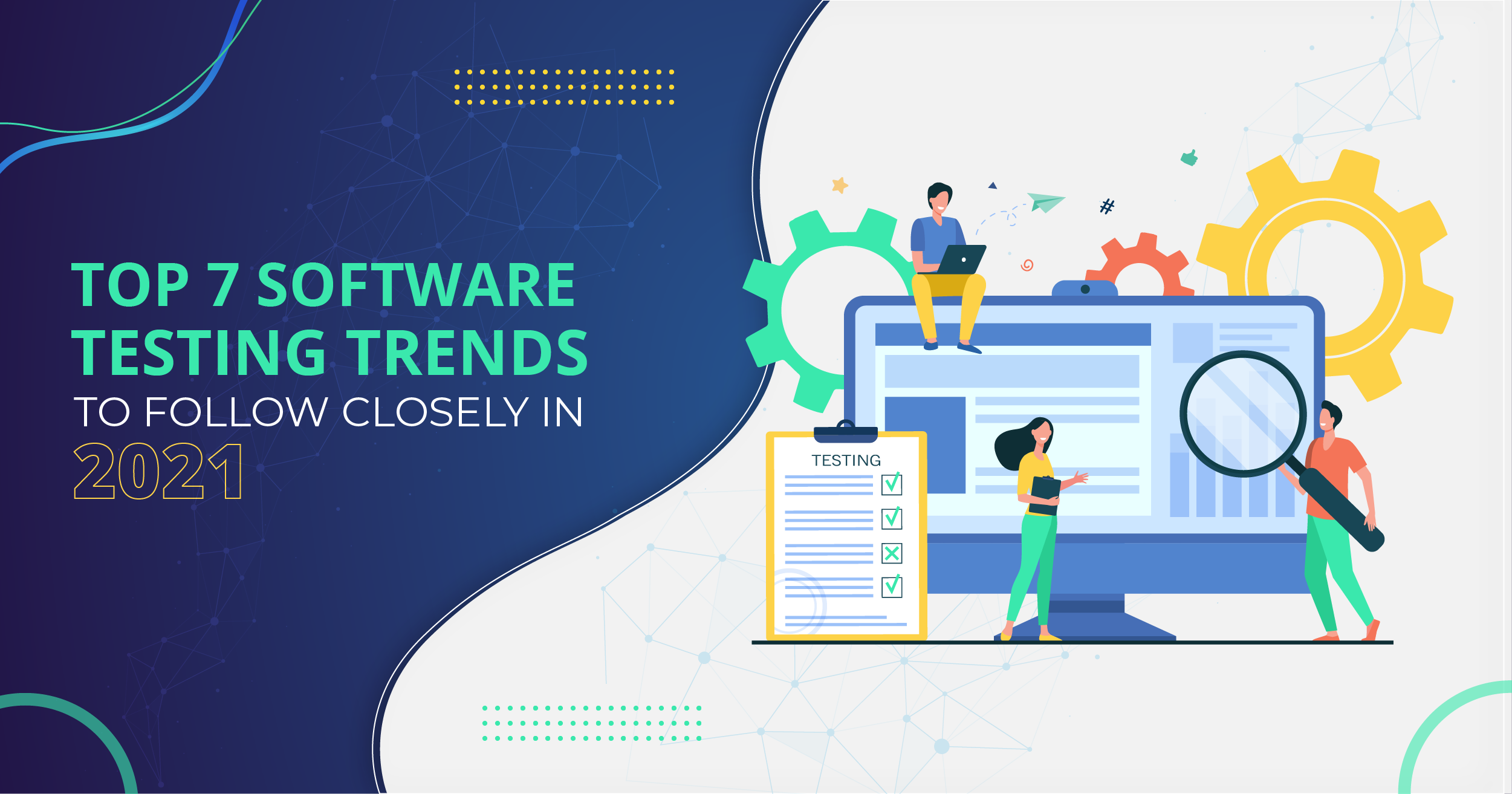In the race to digital transformation, robotic process automation (RPA) is often touted as a quick and effective way to optimize key business processes and extend the life of legacy systems. Process automation robots have the same capabilities as humans in doing repetitive jobs. Moving files, scanning emails, logging in to programs, connecting to APIs, extracting data and others can be automated with RPA.
RPA has proven business benefits like cost reduction, greater accuracy, faster delivery of results. This has resulted in higher customer satisfaction because repetitive tasks are prone to errors when performed by humans. They have achieved better results in process improvement, research and other problem-solving methods, which have brought more employee engagement and income opportunities.
IT leaders need broader plans for RPA to bring DX which includes aligning strategies, proper governance for supporting large software, process stability, cultural & organizational changes, transparent vision among team members and well suited metrics.
Use Cases of RPA triggering New Trends
Initially, when RPA emerged, the main concern was that it started replacing humans. RPA can help you automate more businesses and IT processes with simplicity, helping them achieve digital transformation and generate success stories. For many, partnering with RPA providers increased greater productivity & success.
The RPA service market saw tremendous growth in the last 2 to 3 years. According to Grand View Research, global RPA automation market size was valued at $ 1.40 billion in 2019 and expected to reach $ 11 billion by 2027. It has several use cases at present time.

- Banking & Financial Service: Banks embraced the automation of services or RPA, and a large number of repetitive and rule-based tasks were automated like KYC search, generating reports, some simple calculations, etc. Through the smart account, opening solutions, and KYC process automation; excellent customer experience, and operational efficiencies are achieved. Insurance companies have also adopted automation in various ways, though they are still behind other businesses in automation. Some tasks like policy management, regulatory compliance are done by RPA.
- RPA in Healthcare: Healthcare has assimilated RPA in their internal process because it is directly connected with patients’ health. Most big hospitals have automated processes for policy management, prescription management, payment cycle among others, which has reduced the error and enhanced customer experience.
- RPA in Retail: Retail industry is a customer oriented sector so innovative technology solutions like RPA help in improving customer experience. In return processing, the inventory management, customer billing and reimbursement can be done without error and delay with the help of RPA, also customer support management becomes more quick.
- RPA in Accounting: RPA in finance and accounting is not confined to one part of a process, it can be applied to multiple processes at one time i.e., invoice processing, accounts payable, accounts receivables, reconciliation process, financial closing in ERP.
- In Recruitments: RPA system can receive resumes from various platforms, access value, classify spam or unsolicited applications, and other similar factors. This can reduce the pressure on recruiters and give them more opportunities to reach all candidates. RPA can handle 90% to 95% of key recruitment processes, such as selection, evaluation, measurement, onboarding, and management.
6 Robotic Process Automation (RPA) Trends in 2021
The adoption of RPA is increasingly becoming the cornerstone of improving efficiency in all industries. With the increasing popularity of automation and its benefits, RPA industry trends are rapidly emerging. Through new use cases, companies are looking for innovative ways to get RPA tools up and running.

- RPA in Cloud: Whether it is the medical RPA trend, the bank RPA trend, or the insurance RPA trend, the cloud is now a must. RPA processes large amounts of data. The cloud deployment has enough repositories to store RPA. This means you can build an RPA infrastructure and deploy robots virtually. Essentially, cloud computing will also become a source of autonomous robots that can perform multiple functions.
- RPA in ERP: The integration of RPA and ERP systems provides a centralized platform for business process management. ERP in the supply chain requires human interaction while finalizing decisions on vendors. RPA can automate supplier selection and procurement by selecting suppliers for purchasing and shipping materials, reviewing supplier documents, performing credit checks, and completing supplier selection.
- RPA-as-a-Service (RPAaaS): Many automation system integrators are taking advantage of the huge popularity of RPA and have plans to introduce the RPA-as-a-service (RPAaaS) model. Many SaaS organizations changed the way they worked without incurring additional maintenance costs, by innovating various solutions in the cloud; RPAaaS will provide the same benefits. RPAaaS will gradually reduce development and deployment costs, and drive the need for deploying the most impactful and most reusable components.
- Empowering RPA with AI & ML: Once RPA is integrated into AI, the automation process can start faster processing and achieve continuous automation. The convergence of AI and RPA enables companies to automate more complex end-to-end processes than ever before and integrate predictive models and analytics into these processes so that employees can work smarter and faster.
Both these technologies (RPA & AI) can be integrated together to form a more robust platform for intelligent automation. The modified RPA solution can use data collected by AI to easily handle complex tasks. - RPA in Manufacturing Industry: Every manufacturing industry has a logistics department that manages the transportation of finished products to customers. The integrated transportation management system with RPA enables you to effectively control the transportation of your products.
- RPA in IoT & Big Data: With the increasing number of smart devices, the amount of data in the cloud also increases. In IoT, RPA can help provide information on tasks, and data processes. This information helps to reveal various hidden facts and data, business ideas and trends, to discover insights in business operations.
AI Enabled RPA is the Future of Mass Automation
Recently, RPA robots and intelligent mechanization (AI) solutions are critical in solving this problem and achieving success. RPA can open up new horizons for companies and new potential to provide excellent and personalized customer service. Although the benefits of RPA may be restricted, as organizations struggle with constant break-fix cycles and downtime due to automation.
With innovation becoming a pillar of improving business operations, RPA doesn’t remain an option rather it’s becoming a need. Businesses need to carefully analyse the trends to capitalize on the customer experience. The implementation of RPA is still hard-bitten so starting RPA to replace small repetitive tasks is still better and then scaling it. Since businesses need technical expertise for RPA, collaborating with RPA partners can bring desired results for your business automation.
The future of RPA will include the use of artificial intelligence, advanced data analysis, blockchain, business process automation, optical character recognition (OCR), and other future technologies in combination with smart technologies.
 All Posts
All Posts
